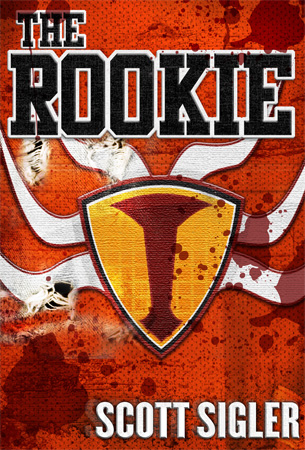On My Honor.
Marion Dane Bauer. Clarion Books, 1986.
Joel Bates is best
friends with Tony Zabrinsky, the boy who lives across the street from him. Although
they get along well, Joel is bothered by Tony’s steady stream of crazy ideas
and Tony’s insistence on having things his way. One day, Tony suggests that he
and Joel ride their bikes out to Starved Rock State Park and climb the bluffs
there, which is a very dangerous activity. Joel, seeking to get out of this
plan, asks his dad for permission, banking on his dad saying no. To Joel’s
dismay, his dad allows the boys to go; his only condition is that Joel must
swear to his dad that he and Tony will do nothing else besides ride to the park
and ride back.
On the ride out, Tony
stops on a bridge over a river and decides that he wants to swim. Joel tries to
convince him that it would be dangerous, but Tony’s stubbornness causes him to
ignore Joel, instead accusing Joel of being scared to go swimming. The boys get
in a fight, and Joel retaliates for Tony’s previous insults by daring Tony to
swim out to a sandbar in the river with him. He knows that Tony is not a good
swimmer, so he expects to be victorious in this dare. The boys race there, but
when Joel arrives, Tony is nowhere to be found. After frantically searching the
river and riverbanks (and nearly drowning from the undertow in the water), Joel
comes to the sickening realization that Tony had drowned, and that he must now
return home to inform his parents and Tony’s parents that Tony drowned on
account of Joel’s dare.
The remainder of the book
deals heavily with Joel’s feeling of guilt, of anger, of blame, and of
responsibility for the death of his best friend. The reader is met with an
engaging perspective into Joel’s disheveled emotional state following the
tragedy. He strives to avoid his parents and absolve himself of any blame, but
he must ultimately come forward with the truth. He struggles to find any
solace, viewing it as a weight he must bear forever. This book offers a
fascinating and chilling account of the manner in which a simple summertime
activity can turn into a nightmare. I would highly recommend this book to
middle school readers. It is a page-turner, as the reader quickly becomes
enthralled in Joel’s dilemma. The vocabulary and content are age-appropriate
for 5th-7th grade students. While this book would be
great for individual reading, this captivating tale of internal character
conflict would also work well as the subject of a whole-class study. Highly
recommended!






